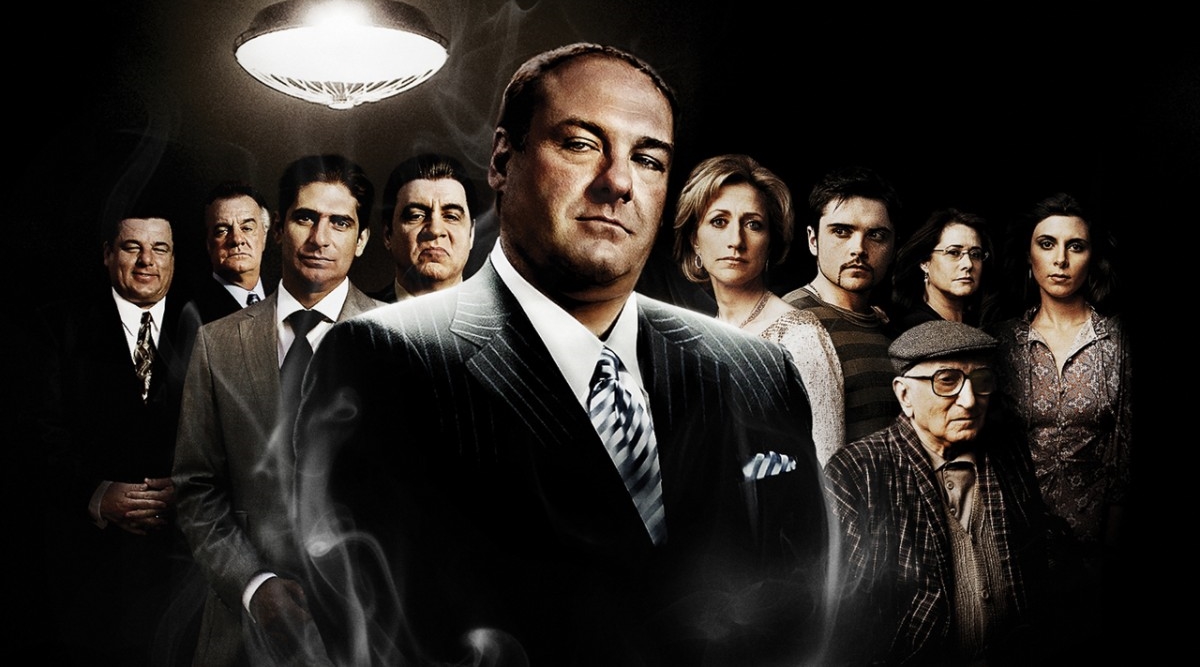How to Pitch a TV Show
A successful TV show pitch determines if a TV series will move from an initial idea into development and production.
When you’re screenwriting a TV show, creating the TV script is only half the job. TV writers also need to be able to sell their show’s concept and craft a compelling pitch for a successful television series.
We’ll explain the details of a TV show pitch to screenwriters and delve into the important elements of a solid pitch document. You’ll also improve your TV show pitching with our practical tips and can learn from famous pitch examples.
All great films start with a storyboard. Try the #1 Storyboard Software built for Filmmakers.
What is a TV show pitch?
The Hollywood cliche of a pitch is a young upstart convincing a hotshot producer of their vision for a television show during a short elevator ride–hence the name “elevator pitch”. In the form of a logline, it gives a brief one-sentence summary of the TV series to hook the reader and generate interest.
The entertainment industry can be formulaic: just like screenwriting follows an established format, a TV show pitch is a presentation varying in length but based on a comprehensive document; the pitch document. This contains the following elements:
The goal of a television show pitch
The purpose of a pitch (in the form of a pitch document, verbal pitch, or a presentation including both) is to sell the core idea of your TV show. It’s a proof of concept that includes the unique selling points, draws the big picture of the who and what, as well as the defining details.
When you’re crafting your pitch, think of the audience to whom you’re selling your television series. TV producers, development executives, executive producers, and studio execs tend to think in categories and in terms of what’s been done before, so they’ll want to classify your core concept and compare it to others. Because of this, you’ll need to include format details. Are you screenwriting a sitcom, docu-series, an unscripted reality TV show or a reality series, possibly with contestants? Is your TV script a half-hour or hour-long?
Parts of the pitch document like the pilot script, the main characters and the show bible are likely to change throughout the development process. But if these format details are not clear, it stands less of a chance with Netflix and co.
Elements of a television show pitch
A TV show pitch consists of a pitch document and you, the author of the core idea or scriptwriter, who pitches it. Your target audience can be a production company, an executive producer or studio execs, a cable network or a streaming platform such as Netflix, Bravo TV, or HBO. In the following, we’ll explain the contents or elements of a pitch document.
Get your FREE Filmmaking Storyboard Template Bundle
Plan your film with 10 professionally designed storyboard templates as ready-to-use PDFs.
Find the emotional hook
You have a personal connection to your story and the concept for your TV show. Your pitch should demonstrate that it comes from you, that you are the right person to write it, and that the audience will care. To achieve this, make it personal and universal at the same time by appealing to the audience’s emotions.
The emotional hook is what draws your audience in. Feelings are universal, we all have them, yet we experience them as something deeply personal. Give your story a strong emotional foundation and let the emotional core of your television show shine through.
In pitch meetings, you can come from the angle of your personal connection to get to the emotional part, but in a pitch document, you’ll have to evoke feelings through the written word. Connect the emotional hook to your main characters, their arc and the show’s themes: love, acceptance, forgiveness, trust, faith, greed, selflessness, responsibility, remorse, blame, redemption–don’t be afraid to draw with broad strokes here!
The logline
The logline or log line is the elevator pitch of Hollywood: it encapsulates the core concept of your TV show and summarizes the story in one or two sentences. Writing killer loglines might appear to be an art form, but in practical terms, it’s a skill you can learn and perfect. Take existing shows you know and come up with lines to answer the following questions:
Consider this logline:
A young boy mysteriously disappears from a quiet suburban town in the 1980s and his friends, his mother, and the police chief have to work together to fight horrifying creatures from another dimension to bring him back.
This description of Stranger Things contains the who and what, where and when, and sets the show apart as a sci-fi mystery horror drama playing on our emotions through fear, horror, loss, team spirit, and overcoming mysterious adversaries.
Note that it’s good to know the audience of your pitch: you can expand your logline to include details on the genre and format because development executives or network representatives might want to hear those buzz words to categorise the show: sitcom, docu-series, web series, half-hour, reality tv show, horizontal or vertical. All of these can be placed as prefixes in your logline:
The show is a horizontal, prime-time, hour-long sci-fi mystery comedy-drama about…
One-sheet
The one-sheet is precisely that: one sheet of paper, sometimes printed double-sided, with a condensed pitch for your TV show. Think of it as a handout for a pitch meeting or a calling card for your project as part of your pitch document, something by which executives can remember your core idea with all relevant information.
What should the one-sheet include? For a TV show pitch, you should list the following:
Series bible and summary
A show bible used to be a document with all the essential details to bring newcomers up to speed. The series bible still serves that function, but screenwriters also produce it as marketing material to pitch a TV show. The bible addresses these questions:
Although show bibles can be long and include a comprehensive overview of complete episodes, try to be succinct and limit the number of pages. Repeat the title and logline of your show, then give a synopsis covering the entire series or first season: what and who, where and when, what is the main point.
The next section lists and describes the main characters, so the audience will learn what drives them, followed by a TV pilot breakdown and an overview of future episodes. For a short pitch, two to three sentences for each episode is enough, though comprehensive bibles might take an entire page per episode.
Here’s a brief TV show bible template:
Pilot Script
A TV pilot is a jargon term for the first episode of a TV show, and your pitch should include a TV script for this pilot episode. Your pilot script transfers the core idea that your title and logline suggest into a real thing that network executives can evaluate. Your script allows them to get to know your writing style, to visualize the main characters with their quirks and interactions, to get a feel for the tone and style, as well as possible audience reactions.
It’s part of the goal of your pitch to have decision-makers read your pilot script so you can win them over with your screenwriting skills. It’s unlikely that your script alone will make or break a deal, but once your pilot script is in front of someone, it should be able to stand on its own.
Development: Where Will The Series Go?
Once a network or executive producer expresses interest in your TV show, the development will still be back and forth. Although there are cases in the entertainment industry where a writer sells a nearly completed show, a producer or a network will usually want to align a show with existing programming or otherwise change a few details.
The exact runtime or number of seasons is generally not predetermined when production on a first season or TV pilot starts, so expect some development over the course of events. For a successful pitch, it may be necessary to communicate that you’re flexible and open to changes as well as collaboration.
This can include willingness to work on your TV show with other writers or a writers’ room, development executives and other professionals, even though you might not have envisioned them when your core idea first came to you. The same goes for casting: actor suggestions can come across as amateur since networks work with casting directors. However, you can flip it around and ask for casting suggestions if the matter comes up during a pitch.
What Is A Sizzle Reel?
A sizzle reel is a “sizzling hot” showreel showcasing your previous work. In the context of a pitch, it can be a video of three to five-minute length summarizing your TV show’s story and plot points, narrative approach or core concept, as well as the main characters. It’s not a trailer or promotional video, but a very clear look at the show, the idea and the style.
The target audience is the executive producer or the decision-makers to whom you’re pitching. Showing the sizzle reel can be part of your presentation, or you can submit a copy or link with your pitch document.
Tips for pitching a TV show
As you’ll see below from our examples, repeated rejections are common, even for shows which go on to become smashing hits. Nonetheless, tackle each pitch meeting individually, give it your all and crush it with the following tips!
Be brief
Executive producers and network executives dread the nightmare of a long pitch. Don’t give a play-by-play, don’t simply read or narrate your pitch document, and don’t make your audience wonder when it’s going to end. Show your personal connection, employ the emotional hook to draw them in, succinctly talk them through the main characters and storyline, and leave them wanting more!
Be Confident
You know you’re the one to tell your story, so go and convince your pitch audience of it! You can begin and end your pitch on the theme of your story, which is particularly effective if you can demonstrate why you relate to it, and why it engages the emotions of the audience. Speak with passion and enthusiasm about the big picture. Don’t be afraid to ask questions yourself. A pitch meeting is also a chance to interview the network or production company on why they would be the best fit for your project.
Practice
Eliminate pauses, gaps and filler expressions from your presentation. Memorize your pitch, time it, and polish it. Seemingly contrary to that advice, you shouldn’t come across as if you’re reciting something by heart, or are pitching this for the umpteenth time. Keep it conversational and colloquial and treat the pitch as if it was happening as a spontaneous meeting instead of something you’ve planned to perfection. Anticipate common questions, so you don’t choke when being asked about details.
TV show pitch examples
Breaking Bad

Vince Gilligan made his name working on The X-Files, but found himself unemployed for a stretch when that show was canceled. He joked with a friend about “a guy who’d put a meth lab in the back of a Winnebago and drove around the south-west.” That guy became Walter White, and the story of Breaking Bad became his transformation “from Mr Chips into Scarface”. The networks didn’t see it though, and Gilligan struggled with producing his TV show. Showtime passed on the pitch, which included an outline and written TV pilot, because they already had Weeds. HBO and TNT didn’t like the idea of a meth dealer as the main character. FX became interested in 2005 but committed to the drama Dirt instead. Gilligan’s pitch eventually won over AMC’s execs, and the network acquired the rights from FX.
The Sopranos

The Sopranos spanned over six seasons and had an eight-year run on HBO. The mob drama that revolves around relatable crook, Tony Soprano, is a darling of TV audiences and critics alike. Creator, David Chase, originally envisioned a feature comedy about a mafia boss, played by Robert De Niro, and his strained relationship with his mother. Yet, his agent rejected the pitch, calling mob comedies “out of date.” Chase adapted his vision for TV and crafted strong female leads during the transition, which the network execs hated. Every major network rejected his pitch for The Sopranos! The notes from CBS said all psychiatry scenes would have to go. HBO eventually accepted the mafia and psychodrama mashup pitch and produced a pilot. By then, Chase seemed to have lost faith in the project, expecting a cancelled show after the pilot. When it aired, the network drew record viewers.
Stranger Things

After more than twenty rejections by TV networks, the Duffer brothers sold their TV show, originally titled Montauk, to Netflix. The love the Duffer brothers have for all things 80s shows in the cryptic Montauk show bible, which pays homage to all its inspirations. They designed and styled their bible like a Stephen King paperback and relied more on an introduction and focus on the themes than a synopsis and logline-because the Montauk / Stranger Things pitch consisted of a written spec pilot. In a mere 23 pages and without an episode breakdown, the series bible establishes the mythos, the story and its structure, genre, tone and style, and the main characters. Everything’s there, it just took Netflix to realize the potential.
The Wire

David Simon’s original series bible of The Wire, a dramatic series written for HBO, has been floating around online for quite a while. It consists of a two-page overview, a one-page setting, a comprehensive list of the show’s many characters, and quite detailed sketches of all episodes in the first season, which make up the largest chunk of the 79 pages. It is in the introduction, however, that Simon brings out the big guns, calling the show a drama of “multiple meanings and arguments” with themes such as national existentialism and culture, the human condition, and the nature of the American city. He also outlines the structure, story arc for each episode and season, and the hyper-realistic style. Yet David Simon ends almost essayistic: “But more than an exercise is realism for its own sake, the verisimilitude of The Wire exists to serve something larger.”
Mr. Robot

Mr Robot isn’t a TV show typical for the USA network. In the words of USA development chief Alex Sepiol, Mr Robot is a “very unique show” and “like nothing else on television.” Esmail’s core idea came to USA when the network was ready to change up its programming and further evolve its brand. Executives were looking for dramas with unlikely, flawed heroes, darker themes, and extraordinary circumstances. Sam Esmail, on the other hand, was convinced by the USA’s promise of a successful launch and series despite his lack of TV experience. His pitch accomplished its goal because Esmail had a long-term plan for the show with completed character arcs and several seasons figured out.
How to Write a Pitch That’ll Wow Editors & Clients (+ Examples)
You’ve sent out a gazillion email pitches, but you keep getting rejection slips. Or, worse, no responses at all.
Why does everyone except you seem to know how to write a pitch that lands high-paying jobs or guest posts on prestigious blogs? Is there some secret they’re not sharing?
Meanwhile, you can’t even crack the content mills and low-quality job boards, your confidence is zapped, and your freelancing career is sputtering to a halt.
It’s not like you’re trying to pitch the New York Times. But when the only writing gig you’ve landed this month is an ad for a boot-scootin’ club, you know you need help.
Thank goodness you found your way here.
Knowing How to Write a Pitch is a Surefire Way to Grow Your Freelance Writing Business

Let’s be honest. No one likes cold pitching. It can be icky and time consuming.
But it can also be very rewarding. And whether you’re a freelancer starting from scratch, or a seasoned, full-time writer looking for more freelance jobs, there’s no better way of getting your foot in the door.
You see, most high-paying clients and popular blogs don’t need to go looking for writers (and they certainly don’t advertise on job boards). They can take their pick from the copywriters, journalists, bloggers, and freelance writers who approach them directly with a well-crafted pitch.
In fact, if you don’t know how to craft a good pitch, you could be stuck in the content mills forever.
That’s why we want to give you all the do’s and don’ts on writing pitches that’ll impress, along with easy to follow tips, and plenty of pitch examples you can steal and adapt for your own use.
In this guide, you’ll learn:
Ready to jump in?
The 8 Biggest Mistakes You Can Make if You Don’t Know How to Write a Pitch

If you haven’t had much luck pitching, my guess is you’ve probably made one of these 8 common mistakes. And if this is your first time, avoid these at all costs.
1. Lead with Your Full Bio
Sad to say, editors and clients aren’t interested in you. They only want to know what you can do for them, and that you can deliver what you promise.
Include a couple of sentences summing up who you are – like an elevator pitch or a tailored version of your bio — but don’t give them your life history.
2. Be Vague
Don’t make them work too hard. Tell them why you’re writing, give them a clear summary of your pitch idea or proposal, and show them you’re the right person for the freelance writing job by linking to relevant clips or a writing sample. Don’t waffle on about anything else
3. Write Long-Winded Emails
The people you’re emailing are busy professionals. You need to respect their time by keeping your article pitch succinct and relevant. If you bore them with unnecessary details, you’ll never get past first base.
4. Copy and Paste the Same Pitch to Different People
This is a real no-no.
Editors and clients have different needs, audiences, styles and niches, all of which you need to address. There is no such thing as a one-size-fits-all pitch letter template. Please feel free to use any of the examples in this post as a framework, or for pitch writing inspiration, but make sure you tailor the details to suit.
5. Show Your Lack of Experience or Confidence
If you don’t have any samples, relevant clips, or experience in a certain writing niche, don’t pitch them. Start with what you know. A well-written pitch oozes credibility and confidence (even if you have to fake it to start).
Don’t say, “I think I could be a good fit for your publication.”
Try something like, “I have hands-on experience at parenting and have previously written about nutrition for toddlers.”
6. Ignore Submission Guidelines
Most publications have clear directions for submitting a story or article idea. Always make sure you follow these directions; otherwise, your pitch will be rejected.
Search for guidelines on their website or try Googling “submission guidelines: [name of publication]”.
7. Attach Anything to Your Email
This adds a layer of annoyance for the editor or client. They don’t want to open attachments and have to read more. They want you to get to the point as quickly as possible.
Plus, attachments are a red flag to IT security systems and your email could end up in spam.
8. Provide a Finished Draft
While some publications may ask for a finished draft, most prefer to hear about your story idea first (which is why it’s so important to check their guidelines). If they like the idea, the editor is likely to make some changes to your original outline. Presenting them with a finished piece before they’ve asked for it won’t do you any favors.
Now you know the mistakes to avoid. Let’s talk about the ingredients you should include in a successful pitch.
The 8 Essential Ingredients of a Freelance Writer’s Email Pitch

1. Research, Research, and Research
This is vital. Get familiar with the publication’s style and tone of voice. Know who their readers are, what topics they’ve covered in the past and what their most recent focus is. Identify the gaps you can fill.
Likewise, with clients, do your homework. Crawl through their website. Check out their Twitter and Facebook pages. Set up a Google Alert to get the very latest news or announcements. Then wow them with powerful words in a perfect pitch that speaks directly to the problem they have. Then, tell them how you can solve that problem with your slick writing skills.
2. Know Who You’re Pitching to
Don’t address your email to “Dear Sir”. It’s lazy and generic. Editors and marketing executives all have names and email addresses, which are not that hard to find.
The easiest way is to pick up the phone and ask who you should send your pitch to. You could also use a tool like Hunter.io (affiliate link) or go to LinkedIn and do some digging. It shows you’ve done your homework and you care enough to get the details right. And when you address a real human being, you stand more of a chance of your pitch getting read.
The exception to this rule is when the publication’s guidelines tell you to email your pitch to a generic address, or via a submission form. In which case, do what you’re told.
3. Write a Zinging Subject Line
Your subject line needs to grab their attention and compel them to open your email. Test a few techniques like these:
- Keep it brief. Data research suggests 7-9 words is optimum.
- Use their name in the subject line to catch their eye. For example: “Mary, I have a great pitch for you.”
- Use a headline that shows you’ve done your research and you know what their readers want. Example: “Story Idea: How to Train Older Dogs“
- Speak to their pain points. “Jeff, need help keeping your blog up to date?”
- If you have been referred by a mutual friend or associate, use their name. “John Brown suggested I drop you a line.”
Whatever you do, keep it professional. Your aim is to get your email opened, not have it redirected to spam.
4. Include a Hook
The aim of the hook is to demonstrate you understand their target audience or business needs and you have something fresh to say. You want to get them nodding in agreement, eager to know more. Ideally, your hook should appear as close to the start of your email pitch as possible.
Here are some ideas:
- Spark their interest with a question: “Issocial media marketinga priority for your business right now?”
- Stroke their ego: “Your recent post on knitting for beginners was fascinating. I have a greatstory ideathat will expand on the topic of how to read knitting patterns and increase your blog’s authority in this niche.”
- Let them know you can solve a current problem for their business or audience: “Did you know 90% of millennials worry they’ll never be able to get a foot on the property ladder? Mystory ideashows your millennial audience how attainable home ownership really is.”
5. Get to the Point and Be Relevant
Now they’re hooked. You have to reel them in. Here’s how:
- Get to the point: What’s your suggested headline or proposal? Go straight to this after your opening and keep your email as brief as possible. It’s okay if you need to take a few paragraphs to explain your pitch. But don’t waffle.
- Be Relevant: Make sure everything in your pitch is relevant. Don’t veer off course. Don’t tell a food blog about your philosophy degree. But, if you’re a graduate of Le Cordon Bleu, that’s something you should include.
6. State the Benefits of Your Pitch
This is one of the most important ingredients. How is your pitch going to help the editor’s audience or the client’s business? How is it relevant or timely? What gives it an edge?
For instance, if you’re pitching a client you might say something like, “What would it mean to you if I could help boost traffic to your website and open the door to more sales?”
Doesn’t that sound more enticing than, “I’m an SEO writer and can help you rank higher on Google with some improvements to your website content.”
Or, if you’re pitching a parenting blog, spell out how your story idea is going to benefit their readers? Like this:
“COVID-19 has presented parents with a new set of challenges. This timely post will explore how collaborative parenting leads the way in a pandemic and gives them techniques they may never have tried before.”
Be clear and direct about the irresistible benefits of your pitch.
7. Tell Them Why You’re the Best Person for the Job
They’re sold on your idea. Now you need to sell them on you. This is where you get to boast a little, but make sure everything is relevant to the topic you’re pitching. Here’s what you might include:
- Your experience in (or passion for) the niche.
- Your experience as a freelance writer in the niche.
- Any qualifications that add to your credibility on the topic.
- Links to a few of your best writing samples and published pieces to illustrate your ability.
“I have been a freelance writer for 2 years and a passionate advocate for animal rights for 10 years. I’ve previously been published in [names of relevant blogs or publications] and my clips include [add links to 2 or 3 relevant clips].”
What if you don’t have any published clips? Don’t worry. Link to your own posts in Medium or LinkedIn. Even unpublished samples in Google Docs will do fine.
If an editor or client loves your idea and you can demonstrate your ability to write and your relevancy to their niche, that’s all that matters.
8. Make it Really Easy for Them to Follow Up
It’s amazing how often freelancers forget to include their basic contact details. Sure, the editor or client has your email address, but sometimes people prefer to pick up the phone, so give yourself every advantage.
Include your phone number and location so they know what time zone you’re in. Better still, create a professional email signature, with all your contact details and relevant links included.
If you happen to be in their hometown, this can also be an advantage as many clients prefer to use local freelancers. So, in this instance, tell them you’re available for a face-to-face meeting at any time.
Now that you know the mistakes found in bad pitches and the essential ingredients to include in good pitches, let’s go over how to write a pitch to editors (for blog posts) and clients or hiring managers (for freelance writing jobs).
Up first, how to write a pitch for blog posts:
How to Write a Pitch for an Article or Blog Post (With Example Pitches)

Firstly, follow all the do’s and don’ts we’ve outlined above. They apply to all freelance bloggers, article writers, even authors of personal essays, op-eds, creative writing assignments, and opinion pieces.
But there are two more key components you must include when you’re pitching a story idea to a blog editor.
1. Be original
This is crucial. Editors are looking for relevancy and originality, and we’ve already talked about the importance of relevancy.
So, what do we mean by originality?
- It’s never been published anywhere else. It must be offered exclusively to the publication you’re pitching (until they reject it and you can move on to the next editor with the same idea).
- The story idea fills a gap or presents a fresh, new perspective their audience will want to read.
That’s why research is so important. You may think your idea is sparklingly new, but you need to be sure of it before you pitch. Go back and look at the posts or articles they’ve published on the topic. What new angle can you use that will add value to their readers?
For example, say you’re pitching a health and fitness blog which has published a few posts about push-ups. You need to make your story idea original by pitching an angle they haven’t covered before. Something like this would work:
“Your readers already know that push-ups are the perfect exercise for multiple muscle groups. But what if there’s a new approach to the humble pushup that could transform their body in 30 days.”
2. Pitch a great story, not a topic
If we take the previous example, the topic would be “push-ups” but the story is how a new approach to push-ups can transform your body in 30 days. See the difference?
Another potential topic is “the growing popularity of motorhome vacations.” But if you tried pitching that as a story idea, you’d be rejected. Where’s the angle? What makes it different?
What about this:
Example of a Story Idea Pitch
Motorhome vacations are becoming increasingly popular, and increasingly expensive. But there’s a new movement of motorhome vacationers who have found a way to travel the country for $1 a day, or even for free. This article explores the little-known benefits of RV relocation – the return or transfer of hire vehicles. It includes an interview with the fleet executive of XYZ Van Hire, and the Murray family who traveled in an RV from Palm Springs to Toronto without paying a dime in rental fees.
Do you see how this gives the story idea substance and a new angle? It also tells the editor the plan of action for tackling it which shows them you’ve thought it through and who you want to interview. These are the trademarks of a professional freelance writer editors love to work with.
Now let’s pull it all together and show you a full example of a pitch email to an editor using all the tips and tricks we’ve covered:
Full Example for a Blog Post Pitch
Hi [name of editor],
I am an avid reader of your blog and loved your recent post on puppy training. But this got me thinking about the challenges of teaching older dogs, which is often overlooked. I have a story idea that will add a new dimension to your series on dog training techniques and help readers who are concerned about the apparently strange new behaviors of their aging dog.
How to Train Older Dogs When They Go Off the Rails
As they age, dogs start to physically deteriorate. Their eyesight and hearing get worse, their memory suffers, and – like humans – they get tired and cranky. And sometimes, they display new and unexpected bad behaviors. This post explores the reasons why your older dog may be changing, how to recognize the signs and how to re-train your dog when he goes off the rails.
I intend to interview Dr John R Smith, renowned veterinary surgeon for his insights into physical changes; and Peter Smith, a dog behaviorist and trainer for his surprising take on how you can teach an old dog new tricks.
The main takeout for your readers will be the comfort in knowing their ageing dog isn’t beyond help, they’re not bad owners, and there are some easy techniques to correct Fido’s newly acquired bad habits.
About me: I’m a freelance writer with 3 years’ experience, and passionate dog lover. Some of my recent and relevant clips are [Name of clip], [Name of clip], and [Name of clip]. My website and further details are here.
Thank you for your time and consideration. I hope to hear back from you soon. Please feel free to email or call — my phone number is […] and I am based in […]
Take this example, tweak it, and make it your own.
How to Write a Pitch for a New Client as a Freelance Writer (With Examples)

Once again, follow all the do’s and don’ts we’ve outlined above. With a couple of exceptions, they apply to client pitches as well.
When you’re first starting out, there are two kinds of pitch emails you should consider: the proposal, or the general introduction.
The Proposal Pitch
This is where you cold pitch a client with a specific proposal in mind. Think about all the writing services you offer and how these might benefit the client you’re targeting: case studies, landing pages, blog posts, email campaigns, and so on. Now match these to a prospective client based on the research you’ve done.
For example: Maybe the client’s blog hasn’t been updated in months, or their “About Us” page on their website could do with an overhaul.
Or you think a business who sells complex software might benefit from some case studies to better explain their product and boost sales.
The proposal pitch should identify the problem, without being over critical, outline the solution, and highlight the benefits. Keep it short, polite, and professional.
Full Example for a Proposal Pitch
Hi [name of client],
I’m a freelance writer and a great admirer of your business. I noticed you recently expanded your product line into the consumer market. Congratulations.
I know this because I was interested in purchasing your [product name] myself, but got a bit lost in the technical information on your website. It occurred to me a couple of case studies might be the perfect solution to help demystify the complexities of the product and boost sales to less techno-savvy buyers.
I have experience in writing case studies in your industry and some of my recent and relevant clips are [Name of clip], [Name of clip], and [Name of clip]. My website and further details are here.
If this idea is of interest, I would be delighted to discuss it with you to scope out a brief and likely fee. I look forward to hearing from you — my phone number is […] and I am based in […]
The General Introduction Pitch
You may not have a specific project in mind for the client you’re pitching, but you want to get yourself on their radar.
In this email you’re going to give them a general feel for your services and find out if they ever use freelancers.
They may not need you today, but if they like your approach, they may consider you in future. So, as ever, treat them like a fellow human being and tailor your message to pique their interest.
Full Example for a General Introduction Pitch
Hi [name of client],
Congratulations on your recent expansion into the consumer market. This must be an exciting time for you, and I’ve been watching your new marketing campaigns with interest.
I’m a freelance writer with experience in your industry and I wondered if you ever have the need to outsource any of your content marketing or copywriting activities – especially as you are targeting new consumer market segments.
I specialize in blog posts, web content and email campaigns and some of my recent and relevant clips are [Name of clip], [Name of clip], and [Name of clip]. My website and further details are here, and I am also an occasional guest on an industry podcast that may be of interest to you.
Incidentally, the last clip resulted in a Page #1 ranking on Google and a significant traffic boost to my client’s website.
I’d love the opportunity to do the same for [name of business], so please feel free to reach out if you think I can help, either now or sometime in the future. My phone number is […] and I am based in […].
A Final Word on How to Write a Pitch
I hope we’ve inspired you to rethink your approach to pitching and spurred you into giving it another try.
Tomorrow, start fresh.
Pick your mark. A local business, or a blog that’s right in your pocket. Do your research and pitch them with an idea that’s relevant and original — something their audience or business is going to love.
This time, you’ve got the ammunition you need to avoid the mistakes, include the right ingredients, and pitch with all the confidence and credibility you can muster.
But always remember, pitching is a numbers game.
The more you do it, the better you will become at crafting those winning pitch letters and emails and landing the high-paying writing gigs and blog posts you deserve. I promise.
The Six-Figure Travel Writer
“How do I write a pitch for a travel magazine article?”

We’ve got a new book out, 101 Things You Need to Know to Make it as a Travel Writer, that answers 101 questions that we hear from travel writers all the time that are holding them back from achieving their Dream of Travel Writing. To celebrate the new book, we’ll be tackling a new sticky travel-writing situation each Monday here on The Six-Figure Travel Writer blog.
“How do I write a pitch for a travel magazine article?”
All pitches should have three key sections, typically in the same order, to be successful:
- the lead/lede or intro grabbing the editor’s attention and showing why your topic is interesting
- the outline on how you’ll write the piece that fleshes out what it will be about and shows where it fits in the editor’s magazine or website and when
- the “I’m so great” (ISG) paragraph or why you should be the one to write the article
The Lead
The opening of your pitch should bear a very strong resemblance, if not be identical to, how you would start the article you are pitching. This means that it isn’t an explanation of:
- who you are
- why you are writing
- what your article is about
Its purpose is solely to grab the editor’s attention (and by extension show that you are a good writer and your article idea is interesting).
The topic of how to grab people’s attention is the purview of extensive studies in marketing, especially copywriting, so, if you’re curious, you can really dig deep into this, but for our purposes, there are two main easy ways to go about leading your reader into the world of your article or pitch: setting a scene or starting “in media res” or in the middle of a story.
(Notice that these both revolve around the idea of having a story or scene rather than simple description or historical fact dumping about a topic. If you don’t have this, your pitch has deeper problems that you need to figure out before pitching.)
Some specific tactics for that first sentence are to:
- use a surprising statistic
- use a colorful quote from a person you met on your trip
- focus on the five W’s (who, what, where, when, why)
- use a sensory detail-filled description of a location
The Outline
For many writers, this is the weakest part of the pitch, if it’s there at all. For me, however, the outline is the hardest part of the pitch, because by the time I’m sending a pitch to an editor, I already have a very good idea of what the article will include and want to throw it all in there to paint a complete picture for the editor.
I know exactly what I want to have in the article because I’ve been doing this for a while, however, so it’s something you can easily learn to do—much more so than leads, which take a certain amount of practice.
If you look at the magazine that you are pitching and find a specific section to aim your query at, the pitch, and by extension the article, writes itself.
- Is the piece a short front-of-book section? Either write the entire short article already (copying the format of previous articles of the same type in the magazine) and send that along as your pitch, or give the barest who-what-when-where-why statement and ask the editor if he or she would like to know more.
- Is the piece a round-up? Pick out the appropriate number of places, see what information is included for each (in a couple past instances of this magazine section) and tell the editor you will include X places, including [TWO OR THREE EXAMPLES] and talk about [THE POINTS TOUCHED ON FOR EACH MEMBER OF THE ROUND-UP IN THE PREVIOUS ARTICLES].
- Is the piece a feature or long department? Check out the typical format of features in the magazine—lyrical, tightly narrated, newsy, historical—pick the episodes from your trip that fit that type of store, and give a sentence encapsulating each scene.
The ISG Paragraph
I borrowed this term from the lovely Kelly James-Enger of Dollars and Deadlines, because I think people get so stuck about what to write here and it really sums it up.
You need to take the end of the pitch to explain why you are so great for this piece. Not saying why the magazine needs it. Not expending five sentences about other places you have written about and why you are qualified to write about them. And not regaling the editor with your full travel CV. Simply and succinctly explaining why you are great for this piece.
This is often the part of the pitch that new writers agonize about the most, so I’ll give you a cheat sheet for this paragraph. Keep it to two sentences only. Focus the first sentence on why you are the person that should write this article, with a combination of physical/in-person knowledge of the destination and familiarity with the topic. In the second, simply say that you are a freelance travel writer or journalist who has been published in…. and list your three most impressive credits—or the ones most relevant to what you’re pitching.
If you already know an editor, you may sometimes omit this final paragraph, although it’s great to keep it, but tune it more closely to the article at hand. For instance, with an editor that I had pitched several times but hadn’t quite gotten a connection with yet, I eschewed the typical rundown of credentials and stuck with the pertinent facts for why I should write the article—that I was going to be in the area in question that weekend and available to do the research.
Need More Answers to Your Burning Travel Writing Business Questions?
Want to get instant answers to more than 400 travel writing questions on everything from placing stories to dealing with editors and free travel to landing lucrative work writing for companies?
We’ve spent the last two years building up our On-Demand Coaching Concierge to answer all of your questions!
You can get access to it, along with more than 200 hours of video classes on building a travel writing business, and how-to-pitch information for more than 600 magazines that cover travel, with the Dream Buffet, our all-access resource pass.
Source https://boords.com/blog/how-to-pitch-a-tv-show
Source https://smartblogger.com/how-to-write-a-pitch/
Source https://www.dreamoftravelwriting.com/pitch-magazine-article/